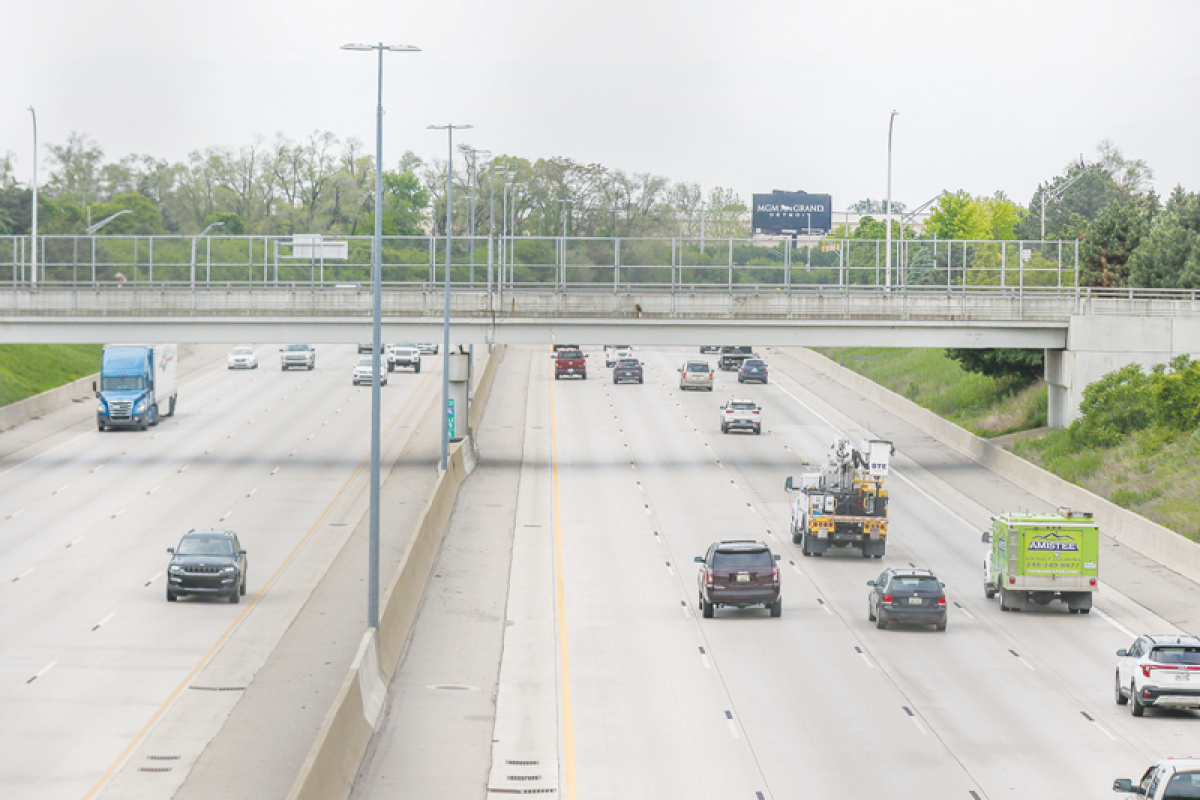MADISON HEIGHTS — Hot off the heels of the massive “Modernize I-75” initiative that ensnarled traffic in and around Madison Heights for years, the Michigan Department of Transportation is finalizing plans for the last leg of another freeway project.
Promising greater safety and efficiency along Interstate 696, the third and final phase of the “Restore the Reuther” project is set to begin next year and continue through 2027, spanning Dequindre and Lahser roads.
During 2025 and 2026, eastbound I-696 will be closed and traffic will be detoured via southbound M-10 (Lodge Freeway/Northwestern Highway), eastbound M-8 (Davison Freeway) and northbound I-75 back to eastbound I-696. Westbound I-696 will remain open, with periodic lane closures during both years.
In 2027, eastbound and westbound I-696 will be open with periodic lane closures on both sides to complete bridge work and restoration of the freeway. In addition, lane closures and bridge closures will be required on cross streets within the project limits during bridge construction.
Diane Cross, spokesperson for MDOT, said any temporary inconvenience will be worth it.
“Motorists and residents are typically concerned about how they are going to get around during construction. They want to know how they can get to work, school, home and recreational activities. We understand that, as we also share that concern. But we must keep improving our infrastructure,” Cross said via email. “With this investment in new pavement, drainage, pavement markings, signing, traffic signals and bridge repairs, safety will be greatly enhanced.”
Pavement in the project area was first constructed more than 35 years ago, and is in need of significant repairs. The work will also include improved drainage, signage and pavement markings, along with modernized traffic signals on the I-696 service drives, and operational upgrades at the westbound I-696 service drive and the Woodward Avenue and Main Street intersection in Royal Oak.
Other items include improvements and preventative maintenance at 60 bridges within the project limits; among them, the Church Street Plaza bridge in Oak Park that will be removed and replaced in 2025 and 2026. Existing amenities on top of the plaza bridge will be restored, and new amenities will be added, such as pavilions, shade structures and fitness stations.
Once completed, the “Restore the Reuther” project will have made pavement improvements along the entire I-696 corridor from I-96 to I-94.
The first phase was completed in 2018, rebuilding eastbound and westbound I-696 from Dequindre Road to I-94. The second phase, currently underway and ending next year, covers the eastbound and westbound lanes of I-696 from I-275 to Lahser Road in Oakland County.
The overall cost of all three phases of I-696 construction is $655 million, of which the third phase from Dequindre to Lahser roads costs an estimated $290 million. MDOT is funding the project through a variety of sources, including the “Rebuilding Michigan” bond program and the federal “Reconnecting Communities” grant program.
The third and final phase directly impacts the communities of Madison Heights, Hazel Park, Ferndale, Huntington Woods, Royal Oak, Pleasant Ridge, Southfield, Lathrup Village and Oak Park. Many will experience varying degrees of rerouted traffic that local officials worry will take a toll on the shelf life of their roads.
Mark Bliss, the mayor pro tem of Madison Heights, said he wants the state to set aside funds for impacted communities to repair local roads worn down by increased traffic, and to carefully coordinate construction periods so that local projects — particularly those funded by time-sensitive grants that can’t simply be delayed — can be completed.
“I won’t debate the necessity of infrastructure projects like these … but the problem arises when the state underinvests in our local roads, and then these highway projects divert traffic onto our local roads, putting undue stress on them. Heavy multi-axle trucks that would never drive through our town are now driving on our roads, requiring instantaneous repairs, pothole work that has to be done, and shortening the life expectancy of our roads. Even if it shaves just one or two years off a road that was expected to last 20 years, that’s additional money we’re going to have to find,” Bliss said.
“And it’s also a headache for our residents,” he continued. “Our residents had to put up with the ‘Modernize I-75’ project, where it would sometimes take up to 15 minutes to drive just one mile on John R. That’s a major artery in our town, so when there’s a logjam, it affects every resident here.”
Off the top of his head, Bliss suggested ideas such as the state setting aside 1% of a freeway project’s construction costs to help affected cities make local road repairs.
“But whether it’s extra funding making sure local roads last as long as they should, or more coordination with other layers of government to ensure we’re not doubling up on road projects and completely stalling out cities, we need to get these things figured out,” Bliss said. “The system here needs to be fixed.”
 Publication select ▼
Publication select ▼




















